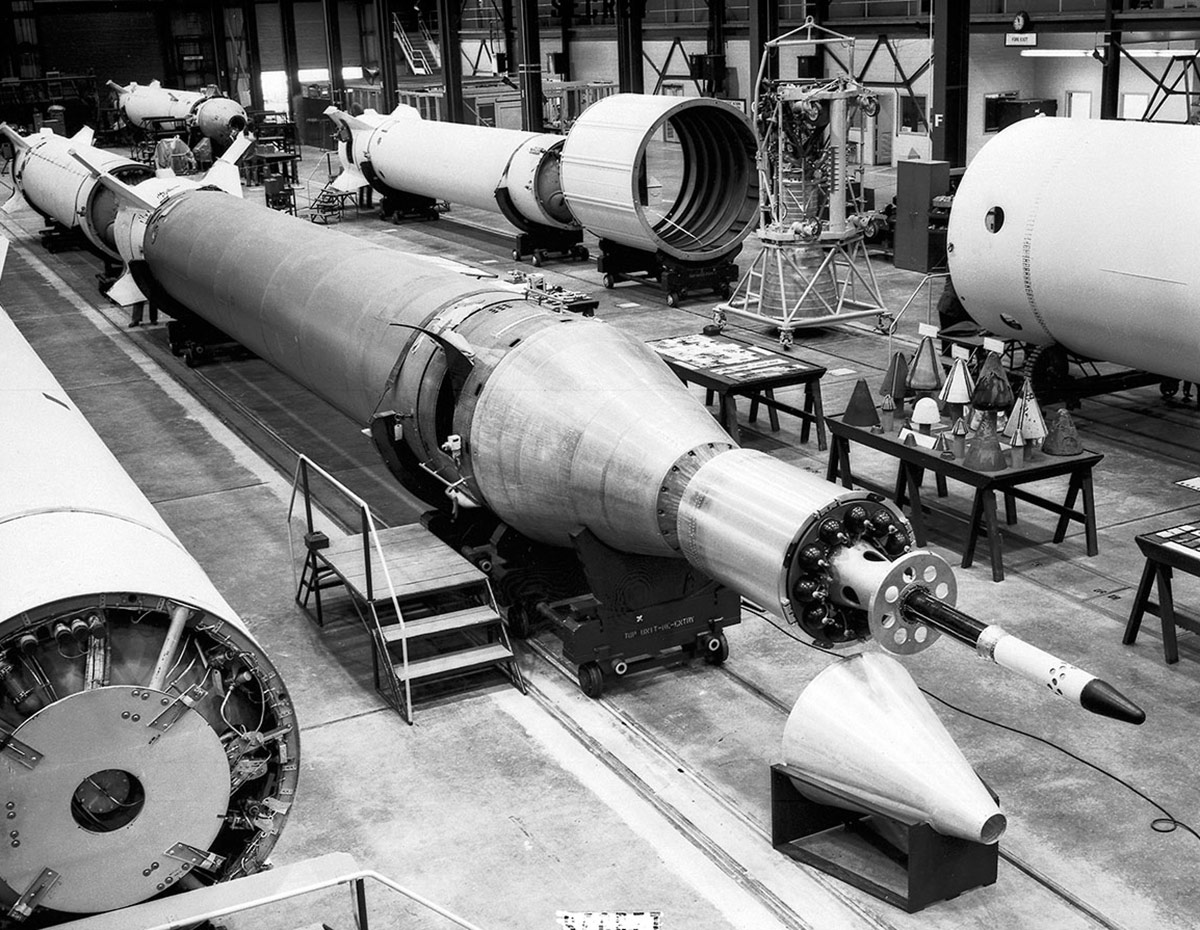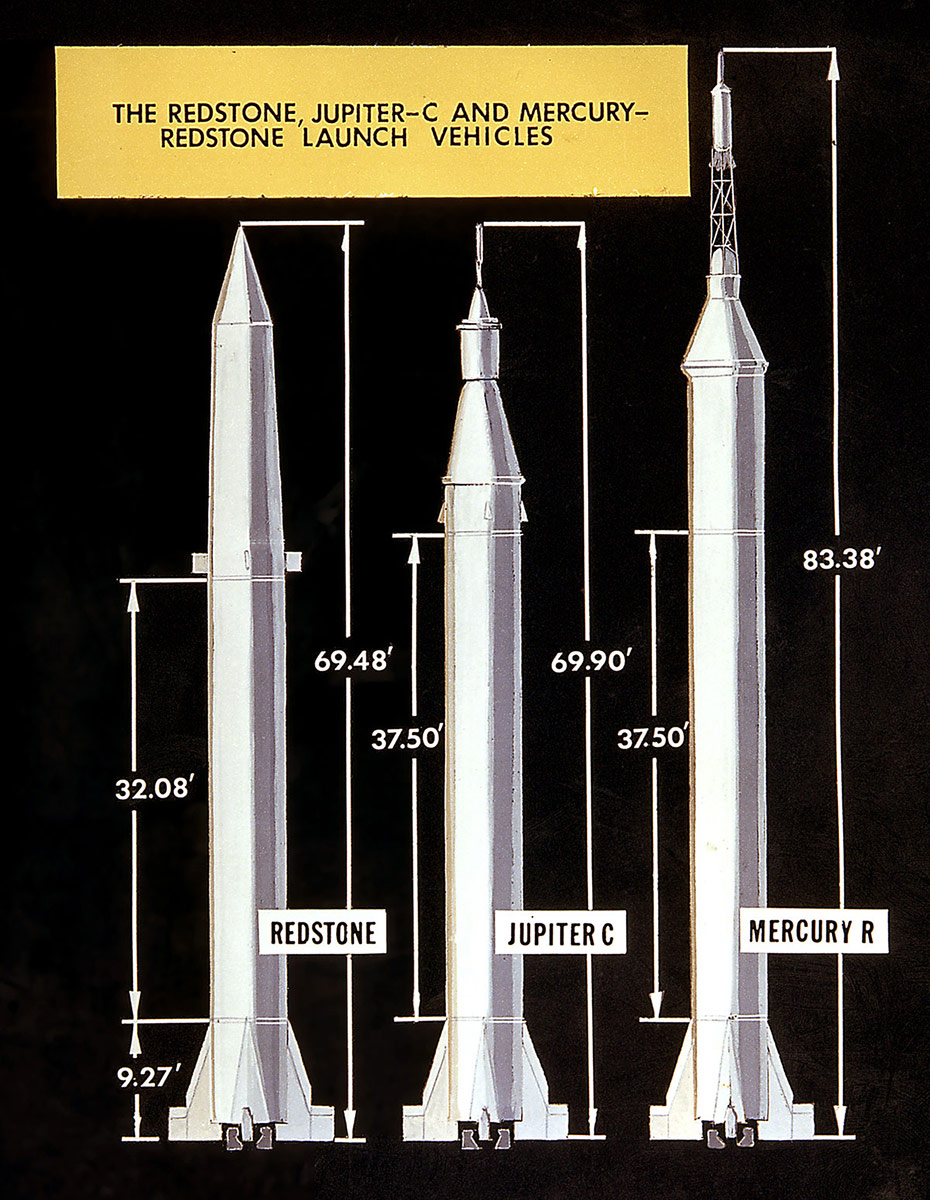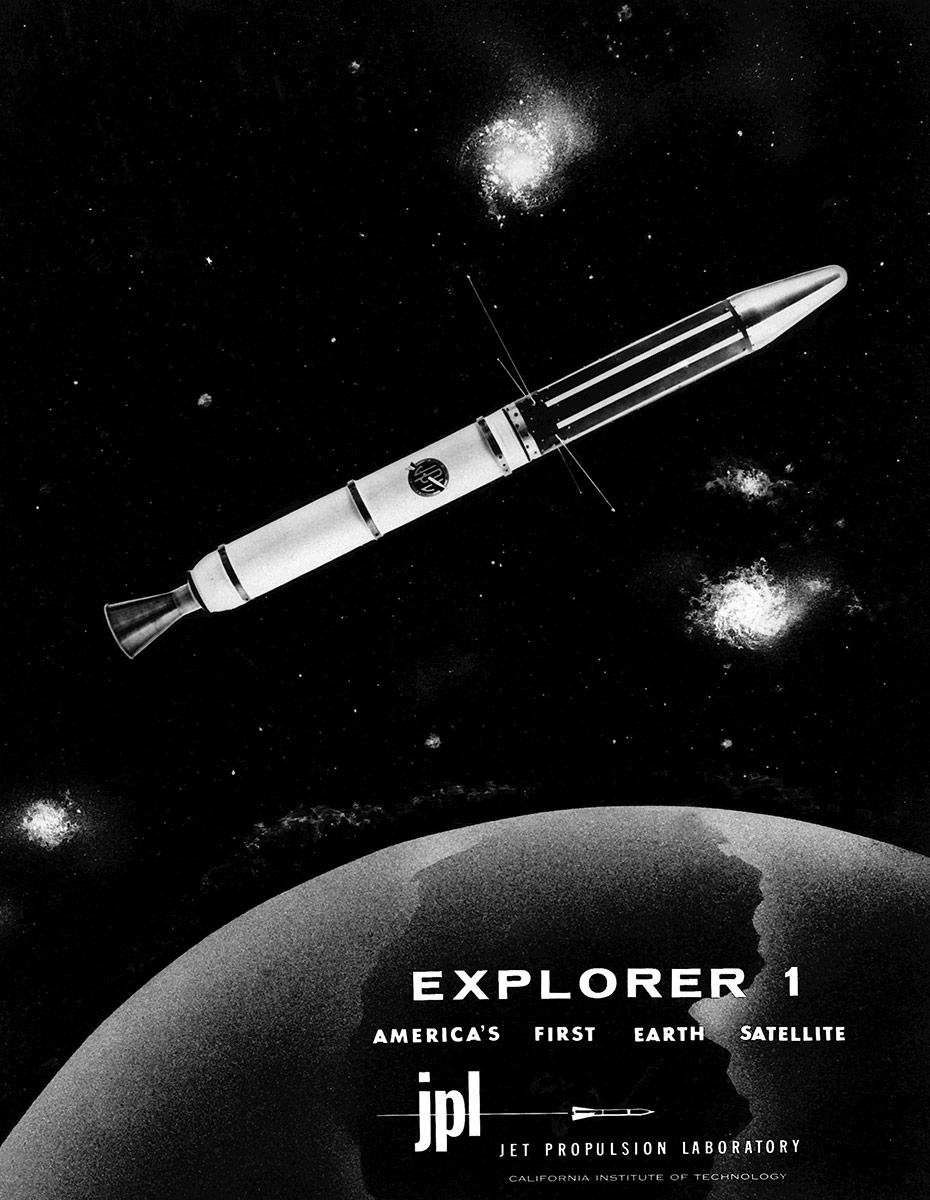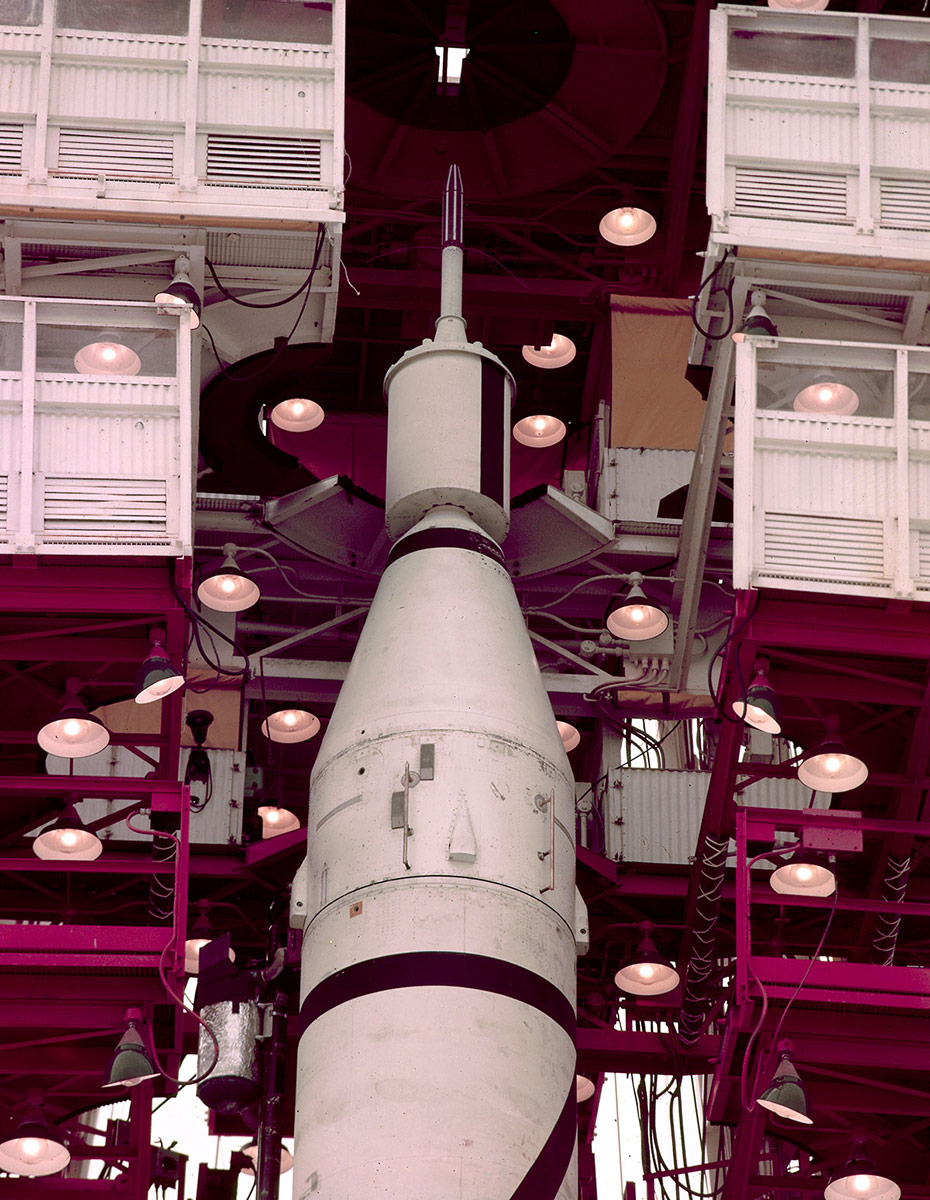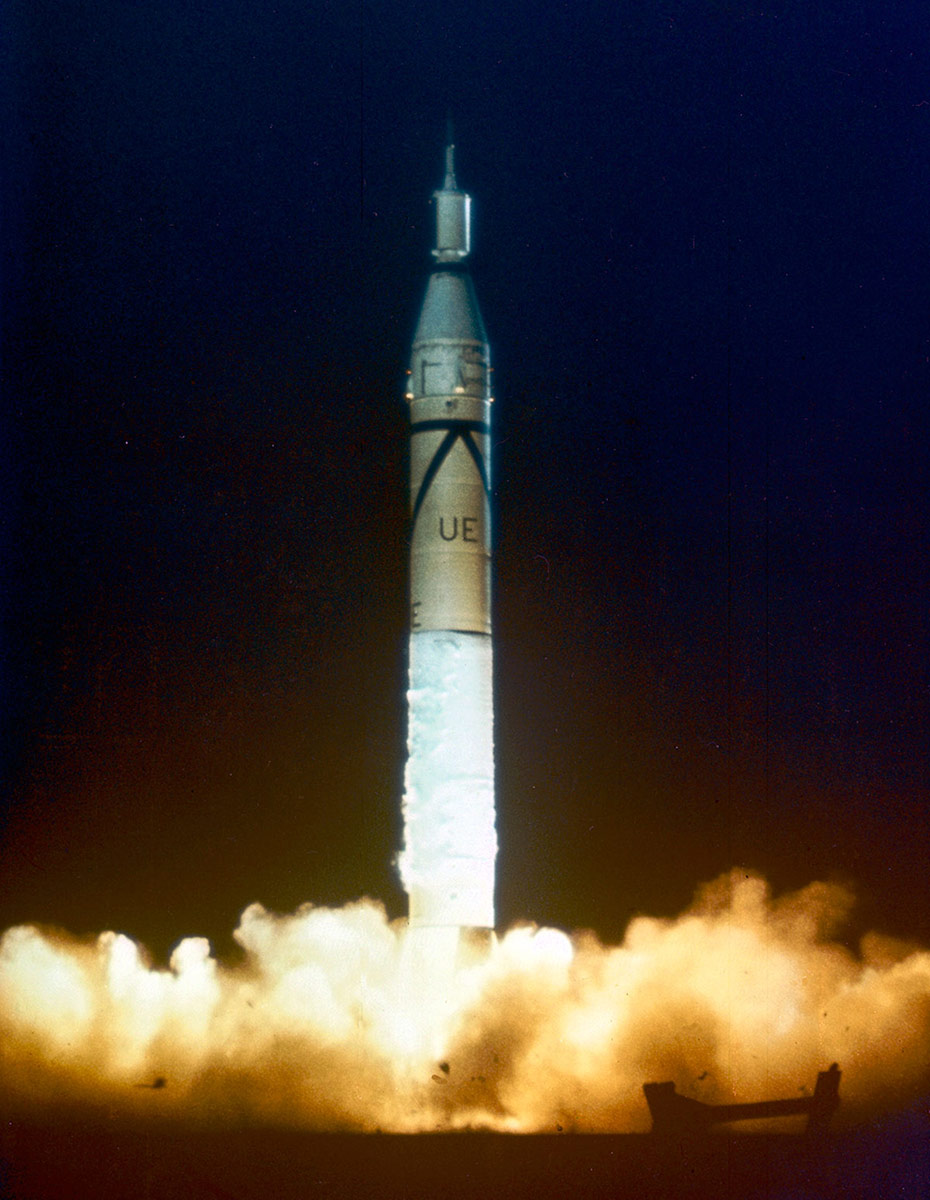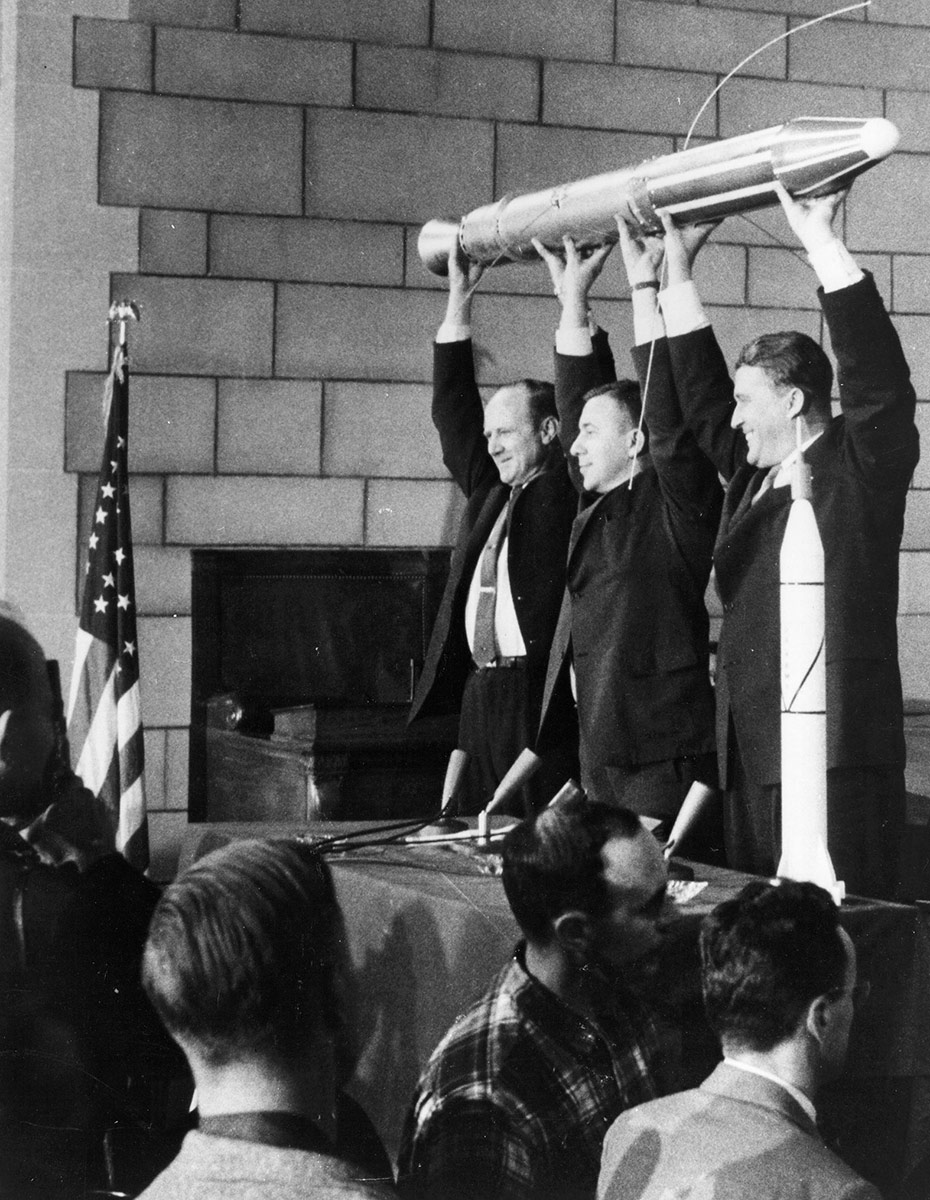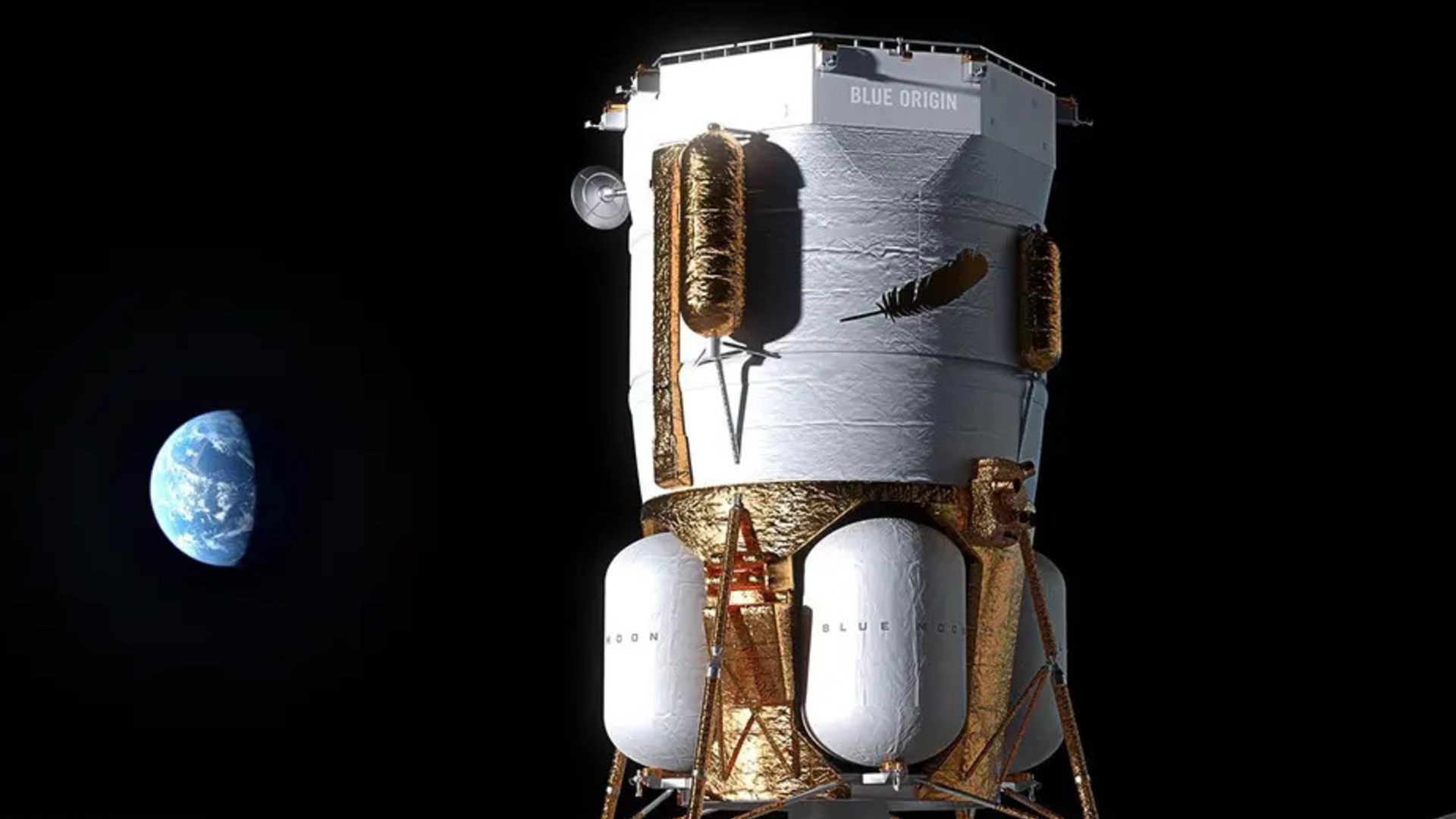Explorer 1: America's First Satellite in Pictures
Explorer 1’s First Journey
George Ludwig, a graduate student who worked with physicist James Van Allen at the University of Iowa, is seen here testing the Explorer 1 instruments as the satellite was prepared for launch. When the call came to get the materials ready for Explorer 1, Van Allen was conducting experiments in the Antarctic. So Ludwig packed what would become the first U.S. satellite instrument into his car ― along with his pregnant wife and two young children ― and drove the components to JPL in California as quickly as possible. The team had only 90 days to prepare for launch.
Jupiter-C Missile No. 27
The Jupiter-C Missile No. 27 assembly at the ABMA, Redstone Arsenal, in Huntsville, Alabama. The Jupiter-C was a modification of the Redstone missile and was originally developed as a nose-cone re-entry test vehicle for the Jupiter Intermediate Range Ballistic Missile (IRBM). A Jupiter-C successfully launched Explorer 1 on Jan. 31, 1958.
Early Launch Vehicle Comparison
This illustration compares the Redstone, Jupiter-C and Mercury Redstone launch vehicles. The Redstone ballistic missile was a high-accuracy, liquid-propelled, surface-to-surface missile. The Jupiter-C was a modification of the Redstone missile.
America’s First Satellite
A JPL graphic of the era celebrating Explorer 1. America joined the space race with the launch of this small but important spacecraft.
Explorer 1 Atop the Jupiter-C in Gantry
Explorer 1 can be seen atop its Jupiter-C rocket in the gantry as the launch date neared.
Blockhouse at Cape Canaveral
Activities in a blockhouse at Cape Canaveral during the launch of the Jupiter-C rocket carrying Explorer 1 on Jan. 31, 1958. On the 50th anniversary of the launch, a marker was unveiled declaring Cape Canaveral Air Force Station as a National Historic Aerospace Site by the American Institute of Aeronautics and Astronautics.
Launch of Jupiter-C and Explorer 1
After two days of weather delays, a Jupiter-C rocket launched from Cape Canaveral, Florida, on Jan. 31, 1958 at 10:48 p.m. (Eastern) carrying Explorer 1, the first successful U.S. satellite. The vehicle consisted of a modified Redstone ballistic missile topped by three solid-propellant upper stages.
Breaking space news, the latest updates on rocket launches, skywatching events and more!
Celebrating a Successful Launch
A model of Explorer 1 is held aloft by (from left to right) JPL Director William Pickering, University of Iowa physicist James Van Allen and Wernher von Braun from the ABMA. The team gathered at a 1 a.m. news conference at the National Academy of Sciences in Washington to announce the satellite's successful launch from Cape Canaveral, Florida on Jan. 31, 1958, at 10:48 p.m.
Celebration at JPL
Engineers at JPL hosted a celebration in the cafeteria on Feb. 4, 1958, to mark the success of Explorer 1's launch. JPL Director William Pickering is at the center, admiring the party’s sheet cake.

Space.com is the premier source of space exploration, innovation and astronomy news, chronicling (and celebrating) humanity's ongoing expansion across the final frontier. Originally founded in 1999, Space.com is, and always has been, the passion of writers and editors who are space fans and also trained journalists. Our current news team consists of Editor-in-Chief Tariq Malik; Editor Hanneke Weitering, Senior Space Writer Mike Wall; Senior Writer Meghan Bartels; Senior Writer Chelsea Gohd, Senior Writer Tereza Pultarova and Staff Writer Alexander Cox, focusing on e-commerce. Senior Producer Steve Spaleta oversees our space videos, with Diana Whitcroft as our Social Media Editor.

